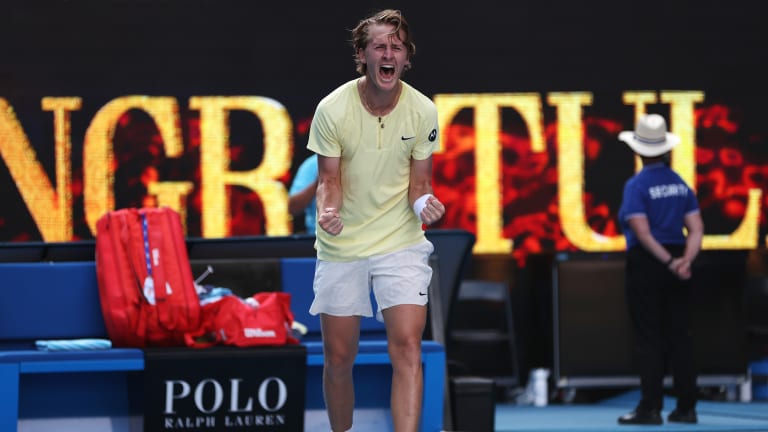Australian open
Life after the Big 3: Plenty of styles in the mix
By Jan 22, 2023Australian open
Australian Open: Henry Bernet inspired by Federer to reach boys final
By Jan 24, 2025Australian open
Rafael Nadal won't play the Australian Open, but we've still got the memories
By Jan 10, 2024Australian open
Three to See, Day 9: Lehecka eyes Tsitsipas upset; Pegula and Azarenka, Khachanov and Korda prepare for rematches
By Jan 23, 2023Australian open
'It was a ripper': Stefanos Tsitsipas stays alive at 'home' Australian Open
By Jan 22, 2023Australian open
Australian Open Media Day roundup: Iga Swiatek the perfectionist, Coco Gauff the veteran, and Rafael Nadal's perspective
By Jan 14, 2023Australian open
'One last time': Samantha Stosur to retire after Australian Open
By Jan 14, 2023Australian open
AO Standings: Tsonga requests wild card; Konta questionable for main draw
By Nov 27, 2021Australian open
More than 85 percent of players are vaccinated ahead of the fast-approaching Australian Open
By Nov 27, 2021News
The ATP is adding a heat rule like the one the women have had for more than 30 years
By Dec 15, 2025Life after the Big 3: Plenty of styles in the mix
With Roger Federer retired and Rafael Nadal and Novak Djokovic both having injury concerns, the Australian Open has offered a look at life after the Big 3.
Published Jan 22, 2023
Advertising
Advertising

Despite concerns over a hamstring injury, Novak Djokovic has battled into Round 4 at the Australian Open.
© Getty Images
Advertising

Sebastian Korda's run to the quarterfinals has thrilled American tennis fans.
© Getty Images